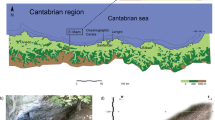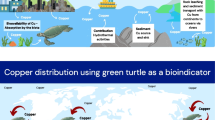Abstract
The European Anchovy (Engraulis encrasicolus, Linnaeus, 1758) represents one of the most important fishery resources in some areas of the Mediterranean. This short-lived, small pelagic fish is characterized by large interannual fluctuations, probably as a result of environmental variability. As part of the European Project Med 98-070, the main aim of which was the study of the anchovy population in the Strait of Sicily, icthyoplankton surveys were carried out between 1999 and 2001, during the peak spawning season for anchovy. Present work reports the relationship between meso-zooplankton biomass and the abundance of anchovy eggs and larvae in the Strait of Sicily. Data on anchovy egg abundance showed that the main spawning area was located in the north-western region of the study area. The branch of the Atlantic Ionian Stream, running parallel to the southern Sicilian coast, acts as a transport mechanism for anchovy eggs and larvae towards the southernmost end of the island, off Cape Passero. Observed distributions were largely consistent with local hydrographic features, which allow larvae to be retained in areas providing the necessary feeding conditions for recruitment success.
Similar content being viewed by others
References
Borja, A., A. Uriarte, V. Valencia, L. Motos & A. Uriarte, 1996. Relationships between anchovy (Engraulis encrasicolus L.) recruitment and the environment in the Bay of Biscay. Sci. mar. 60: 179–192.
Casavola, N., E. Hajderi & G. Marano, 1998. Relationship between the density of Engraulis encrasicolus eggs and zooplanktonic biomass in the southern adriatic sea. Biol. mar. Mediterr. 5: 56–62.
Cuttitta, A., G. Basilone, B. Patti, A. Bonanno, S. Mazzola & B. Giusto, 1999. Trends of anchovy (Engraulis encrasicolus) condition factor and gonadosomatic index in the Sicilian Channel (in Italian). Biol. mar. Mediterr. 6: 566–568.
García-Lafuente, J., A. García, S. Mazzola, L. Quintanilla, A. Delgado, A. Cuttita & B. Patti, 2002. Hydrographic phenomena influencing early life stages of the Sicilian Channel anchovy. Fish. Oceanogr. 11: 31–44.
Giráldez, A. & R. Abad, 1995. Aspects on the reproductive biology of the Western Mediterranean anchovy from the coast of Málaga (Alboran Sea). Sci. mar. 59: 15–23.
Holden, M. J. & D. F. S. Raitt (eds), 1975. Manual de Ciencia Pesquera. Parte 2-Métodos Para Investigar los Recursos y su Aplicaciòn. Doc. Tec. FAO Pesca, (115) Rev. 1. 211 pp.
James, A., J. W. Pitchford & J. Brindley, 2003. The relationship between plankton blooms, the hatching of fish larvae, and recruitment. Ecol. Model. 160: 77–90.
Robinson, A. R., J. Sellschopp, A. Warn-Varnas, W. G. Leslie, C. J. Lozano, P. J. Haley, L. A. Anderson & P. F. J. Lermusiaux, 1999. The Atlantic Ionian Stream. J. mar. Syst. 20: 113–128.
Tikhonova, I., O. Arino, G. Ivanitskii, H. Malchow & A. Medvinskii, 2000. The dependence of fish school movement and plankton spatial distributions on the phytoplankton growth rate. Biofizika 45: 352–359.
Author information
Authors and Affiliations
Rights and permissions
About this article
Cite this article
Cuttitta, A., Carini, V., Patti, B. et al. Anchovy egg and larval distribution in relation to biological and physical oceanography in the Strait of Sicily. Hydrobiologia 503, 117–120 (2003). https://doi.org/10.1023/B:HYDR.0000008473.96144.d3
Issue Date:
DOI: https://doi.org/10.1023/B:HYDR.0000008473.96144.d3




